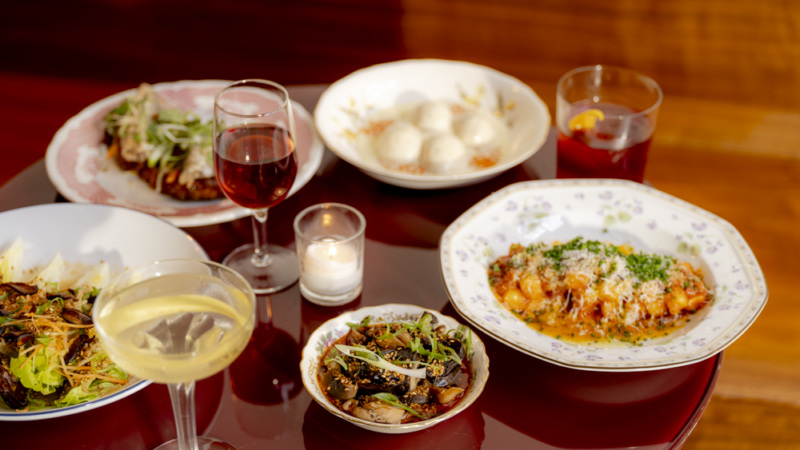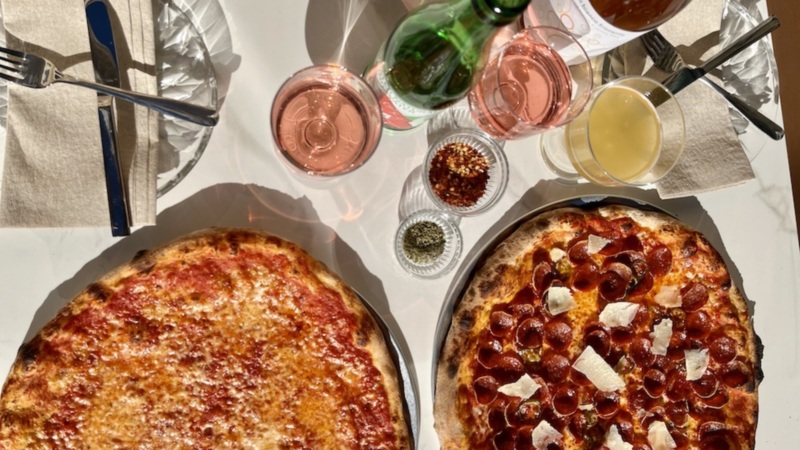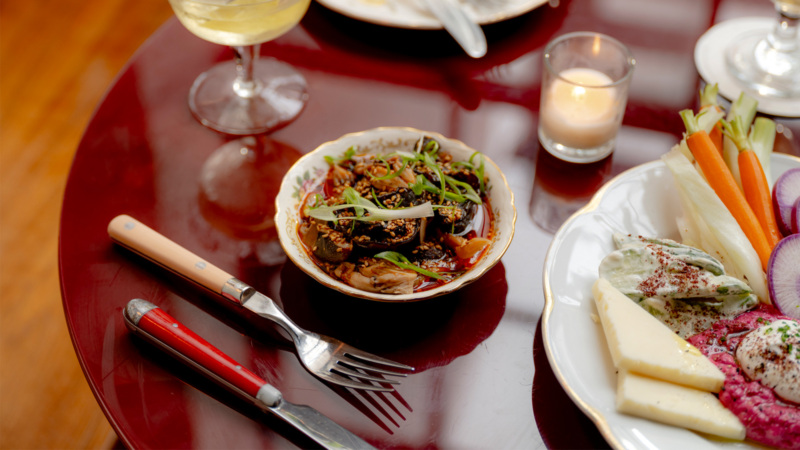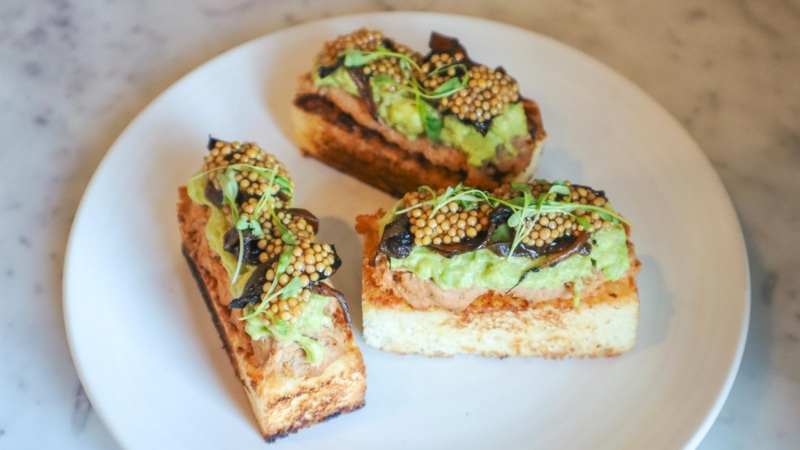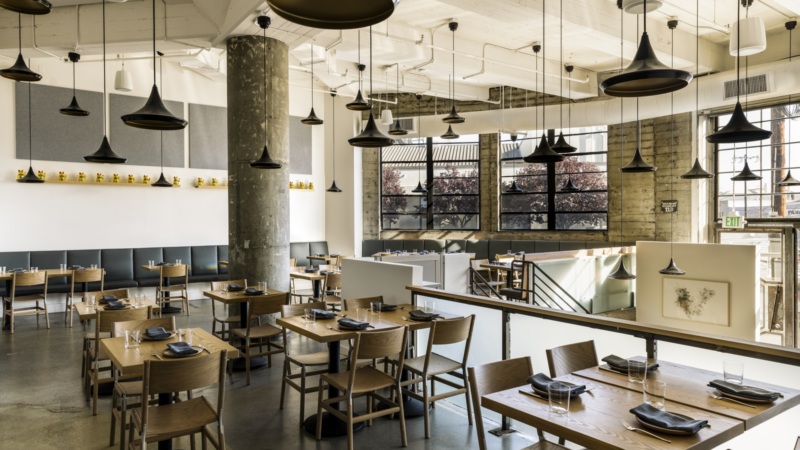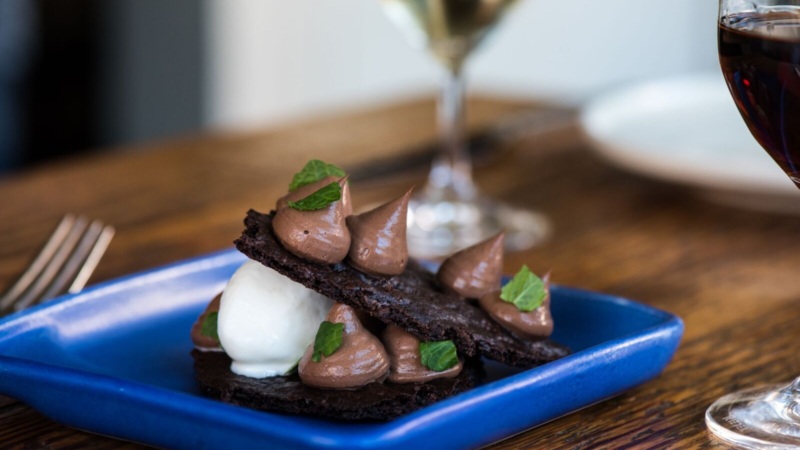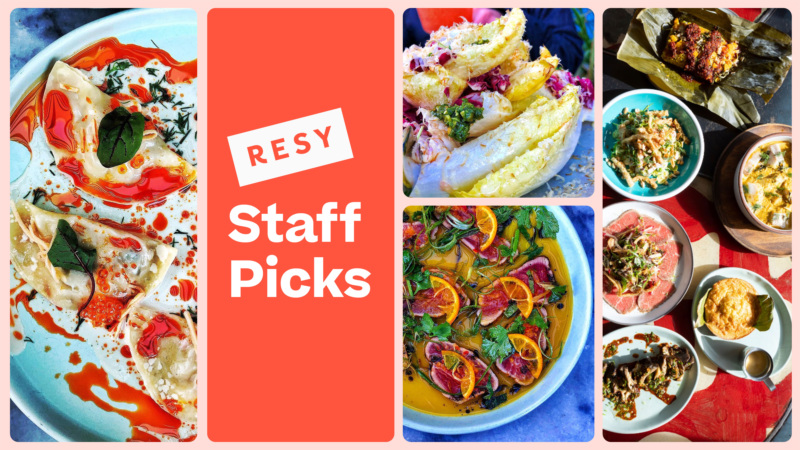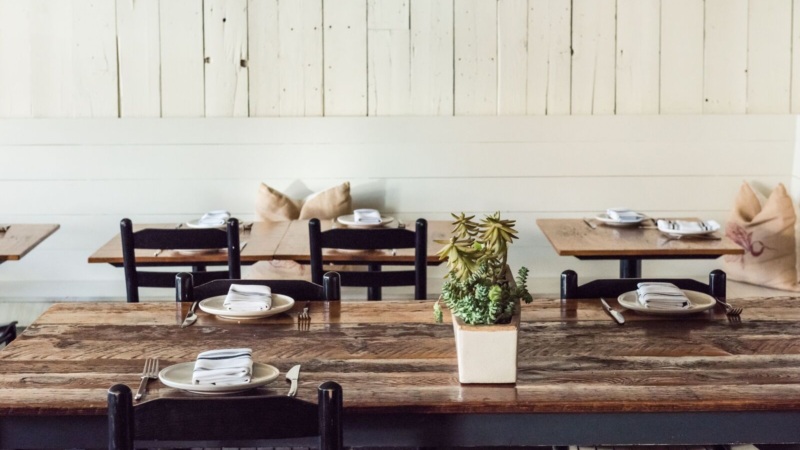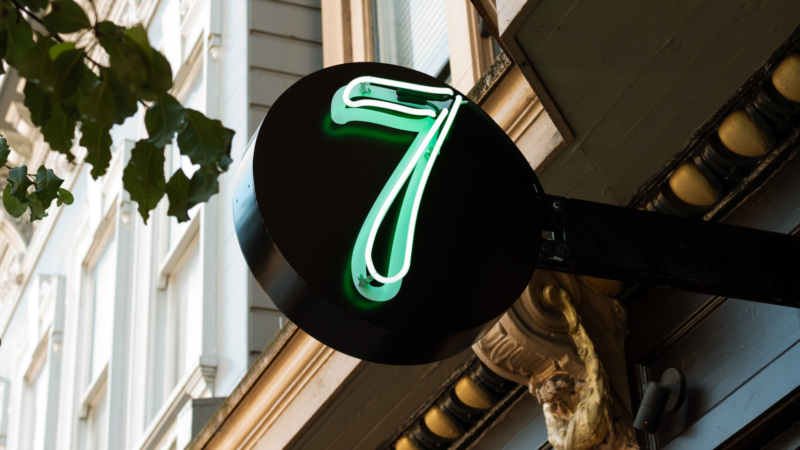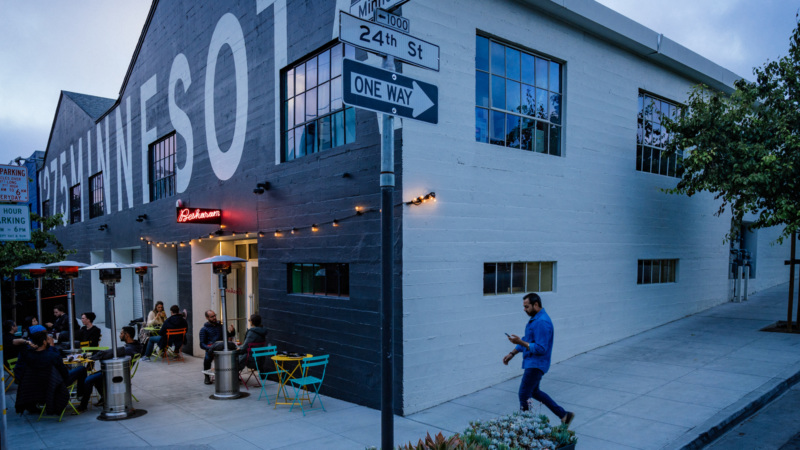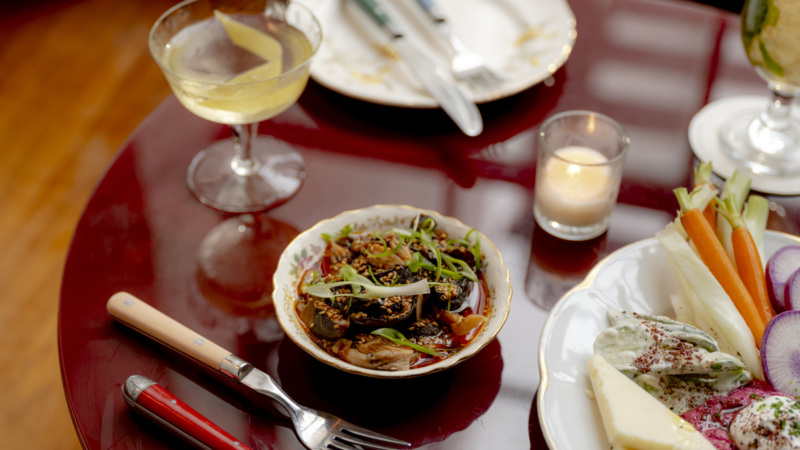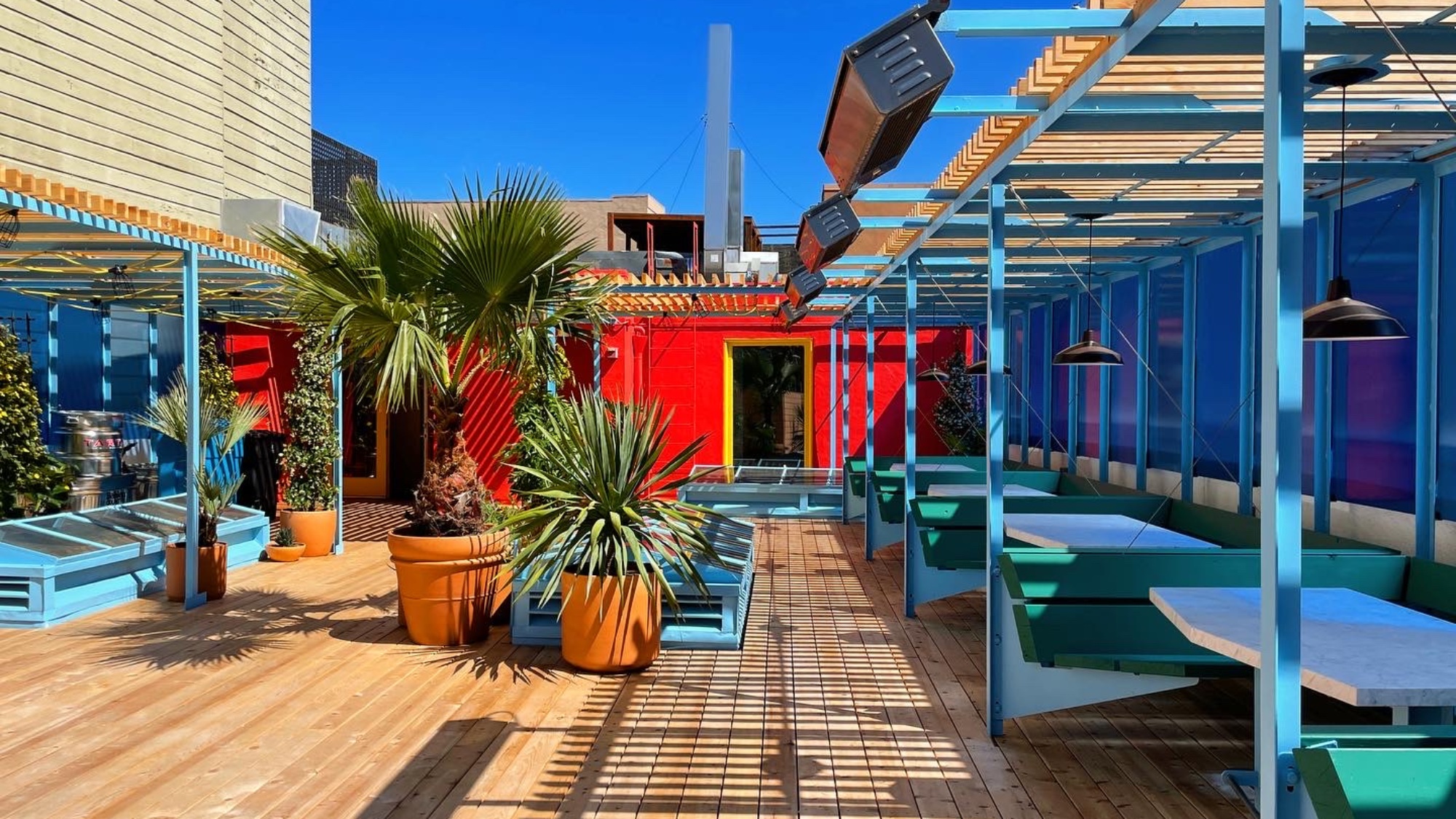
These S.F. Restaurateurs Want You to Understand a Few Things About Dining Right Now
Ask any restaurant worker what the past two years have been like, and you’re bound to hear variations on the same theme: incredibly tough. Awful, even.
The pandemic has impacted every single one of us in different ways, and for the restaurant industry, particularly, it was catastrophic in many ways. The effects are still ongoing, from rising inflation and labor shortages to supply chain issues and now, more ominous variants, too. But for some, the pandemic also proved itself to be an opportunity: a chance to change things for the better.
At least that’s how chef Ravi Kapur and Jeff Hanak, owners of San Francisco’s Liholiho Yacht Club (reopening later this year in its original Nob Hill location) and the soon-to-open Good Good Culture Club saw it. The pandemic forced them to close one of their restaurants, Dear Inga, and to pivot, endlessly, as many other restaurants across the country have, to offering outdoor dining, takeout, and delivery.
But it also gave them a chance to reevaluate how they wanted to operate as a sustainable business going forward. So they worked on developing a core set of values for their restaurants, and in May 2021, they announced they would include a 20% equity fee, in lieu of gratuity, to bridge the pay gap between front- and back-of house workers and to address the inequities that are baked into the traditional pay structure for restaurant workers. They also shortened their operating hours.
Both acknowledge that the pandemic hasn’t been easy, nor has it been easy to reevaluate and reconfigure their entire business — but they are committed to making things better for their staff and their business, and they hope diners will understand why. What follows is a conversation with both in mid-December 2021, about their ongoing work.
Note: This interview has been edited for clarity and length.
Resy: 2021 was a bit better than 2020 was for restaurants but it was still rather challenging. What do you want diners to know about the challenges you’ve faced?
Jeff Hanak: I want to actually thank them for returning. And thank them for their undying support, from the standpoint of helping us get through the takeout business and buying gift certificates to supporting us right when we opened, and then filling our restaurant.
Ravi Kapur: Yes, it has been challenging, in a lot of ways, but it’s also provided an opportunity to take a look at what we do and why we do it. What we want more of, what we want less of, professionally and personally. And we’re kind of just going through this together. I think if there’s empathy on both sides, throughout, it’ll just make everybody’s experiences more positive.
And what’s the biggest challenge you’re facing today?
Kapur: I don’t think there’s any one challenge. There are many factors that make this a challenge. For us, it’s having this last year-and-a-half to really take a look first at ourselves and how we operate. And to deal with ourselves first. For example, there’s the labor shortage: I think everybody wants to say there’s no staff because of a labor shortage. But for us, it’s going a little deeper and saying, “Well, do we have a part to play in that?”
Hanak: I’ve come to the conclusion that COVID is something that we have to learn how to live with. And there’s the uncertainty of not knowing if staff are going to call you and say they’re out because they tested positive. I think what we’re trying to do is buffer that uncertainty.
Also read: Dining in 2022? Here Are Six Things to Watch
Kapur: What we’d like guests to know is that when we implement changes to how we operate, whether that’s our equity fee, or our hours of operations, the goal is not to just make more money. It’s how we look at the ecosystem we built and make it more sustainable for everybody involved.
When we raise a price, it’s not just a number we pull out a pull out of the air; it’s based on the cost of labor, it’s based on retaining and training staff when our rent and utility costs have all gone up, and delivery fees have gone up, all of these things.
But also, we need to make sure we take care of ourselves and take care of our staff, so they can be in a place where they can look forward to coming into work and they want to be a part of the restaurant for the long term.
- What Will Dining Be Like in 2022? Here Are Six Things to Watch
- Why This Chef Wants Diners to Know Everything About Her Business
- The Best of The Hit Lists in 2021, From Coast to Coast
- Resy’s 61 Favorite Things of 2021: A Guide to Restaurants We Love
- 20 Questions With Jackrabbit Filly’s Corrie and Shuai Wang
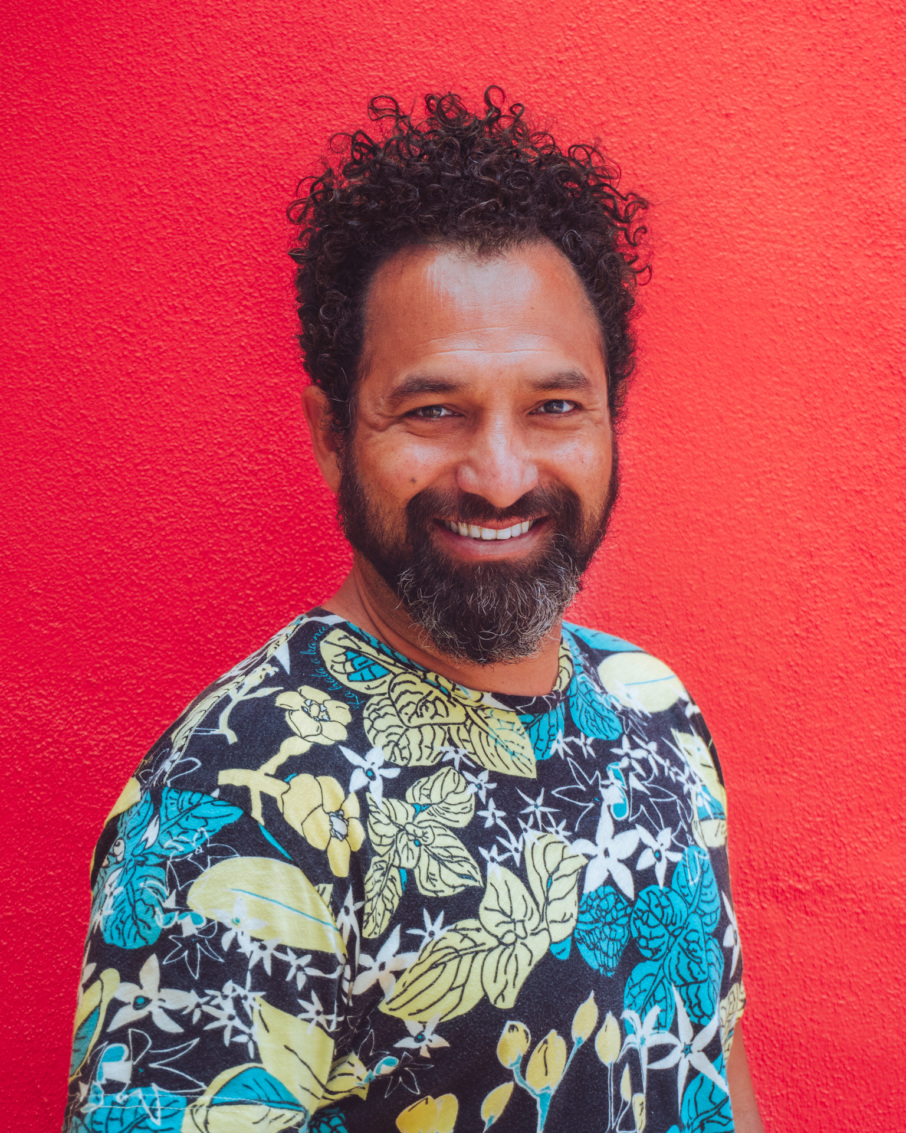
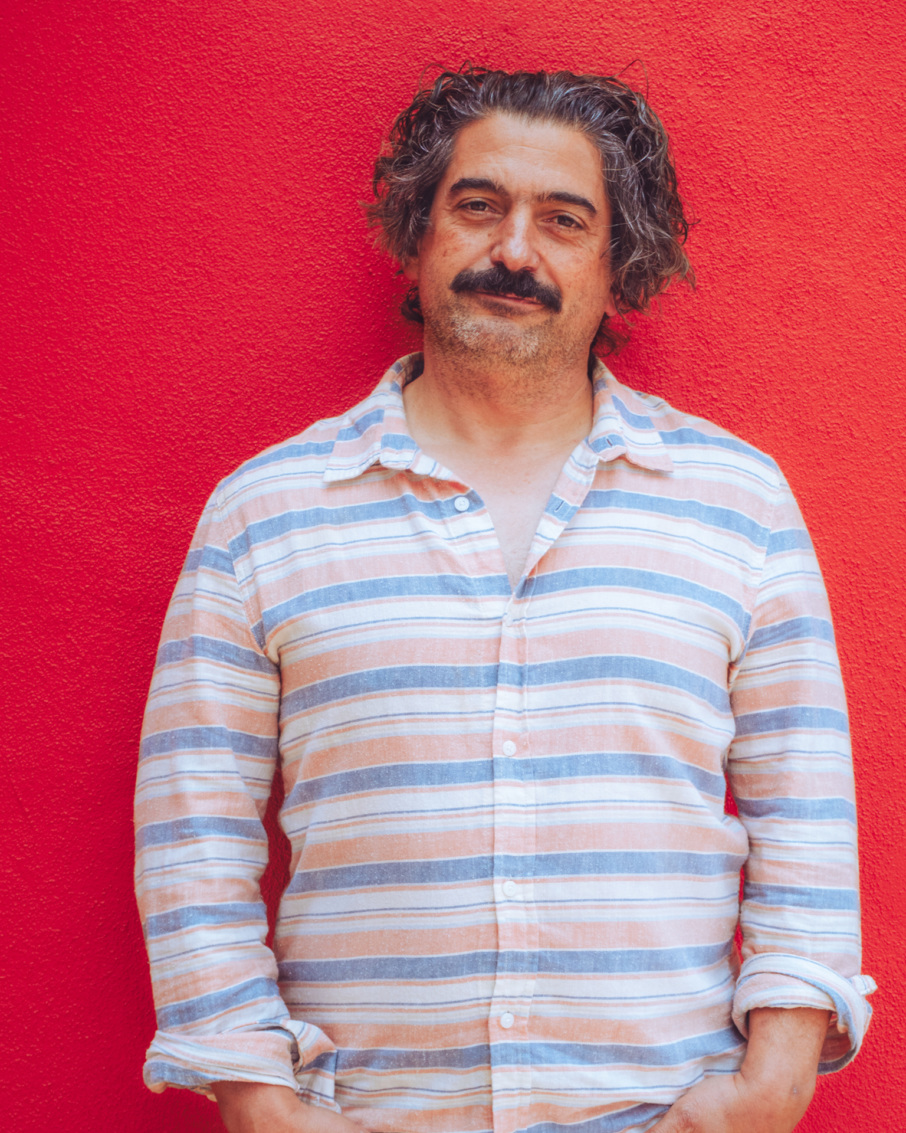
How did people respond to the equity fee?
Hanak: For the most part, I think it’s been very favorable. And I think it’s because we did so much work before implementing it, in terms of setting some very strong core values in place at our restaurant. It’s very out there in the open; it’s not a hidden fee.
Kapur: Back in March 2020, when the pandemic arrived, it forced us to take a good look at what we do, why we do it, how we do it, and to understand that when we come out of this thing, on the other side, in some form, we want it to be different.
The equity fee was a result of thinking of our core values, and how we want to operate and how we want to compensate people and the environment we want to create. And it led us to that being the most equitable way to do that for all involved.
Hanak: It’s called an equitable compensation fee. It’s not a gratuity. It’s not a service charge.
▪️
When we raise a price, it’s not just a number we pull
out a pull out of the air; it’s based on the cost of labor,
it’s based on retaining and training staff when
our rent and utility costs have all gone up,
and delivery fees have gone up, all of these things.
▪️
What have the past two years taught you in terms of the relationship that you have with diners, especially when it comes to talking about changes that you had to make at the restaurant?
Kapur: There was this very small window of optimism when we reopened for indoor dining at 50% capacity, and then 75% capacity. And I think, for a lot of restaurant owners or small business owners, we had this idea that the public would appreciate what we did more, or be happier with the changes we made. And maybe that was true, but I feel that humans in general, we’re all creatures of habit. You can just see how quickly we can kind of move past these challenges and uncertainty.
So there might have been a small period of time where people were more open, but it’s still back to being a business. The [restaurant business] is not a charity, and it’s not like we can put these changes in and they’re just accepted. But I think what’s important is that we know why we did it.
It sounds like a big part of those core values you want to instill have to do with sustainability of the business and implementing more of a work/life balance. Why is that so important, especially now?
Hanak: With the majority of restaurants, you are working when everybody else is socializing, right? You’re working late at night, when realistically, for your health you should probably be winding down and going to sleep. That’s exhilarating. But after a shift, I don’t think there’s any other industry except maybe being a doctor, an emergency room doctor, whose job goes from zero to 100 miles an hour so quickly [and where it’s a challenge to hit the brakes after your shift ends or to unwind in a healthy way].
We’ve changed our dining hours from 5 to 9 p.m. They used to be from 5 to 10 or 5 to 11 p.m. But that adds on two to three hours before and two to three hours after. Allowing people to still work an eight-hour day but honestly get out of work at a time when you know you can wind down and get a decent night’s sleep is so important because realistically, it helps us have a mentally stable staff and management. They need time to decompress, and they need time for themselves before they come into work. Or this kind of hamster wheel keeps going.
Being open an hour or two less, it does impact our sales. So, we need to find a way to make this model work. It may not bring profitability in the way that we had anticipated prior to the pandemic. But if it can still provide a level of income for everybody to live in the city, as well as provide a balance of mental health and enjoyment so that when you wake up, you’re not totally toast, I mean, I’m all for it.

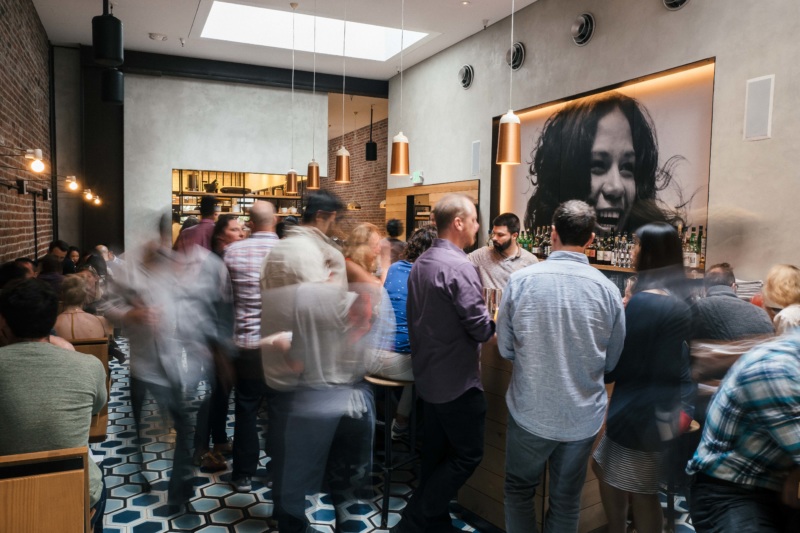
How does that impact the dining experience for your customers?
Kapur: When the staff feels like their entire wellbeing is being is being considered, they feel safe, and they feel that they’re in a place where their voices matter. And that was important to us. The restaurant business is a tactile business: We’re making things and presenting things, and it’s not scripted, to a certain extent. And when you have people who are happier, and content, doing the work, I think you have a better result.
And if you’re not feeling safe, and you’re not feeling respected, and you’re making something, I mean, it comes out. The proof is in the final product and in the interactions, and everything is connected. What we didn’t want to do is say, “Oh, we care about all of you and your mental and physical health is very important. But also, we’re open seven days a week from 5 to 11 p.m. And your work shift is 14 hours.”
You both mentioned rising costs earlier. What would you like diners to understand about the rise in menu prices?
Kapur: Well, I mean, everything, all the raw materials we’re using, I would say they have gone up at least 25%. When we raise our prices, our profit does not increase; it has very little bit to do with profitability. It has to do with our cost of goods — especially, our protein costs, which we don’t always talk about. Our pork comes from Llano Seco and I would say, in general, the cost of sourcing local pasture-raised pork, compared to even pasture-raised Midwestern pork is at least 40% more.
So, again, increasing prices does not correlate to our profits going up at all. I think that’s a major disconnect, and there’s this kind of public perception that oh, they must be raking it in, right? And I think people walk into our restaurant and they see it busy and packed, and it’s an automatic assumption that it equals rich owners being greedy in some sense, right?
Hanak: Rent goes up every year by 3%. If we’re doing a good job, we have long-term staff with us, and long-term staff deserves pay increases. So, we can’t stay at the same price and still have a business that is sustainable, financially and operationally.
So yes, every year we’ve increased prices, and we try to be as conscious as possible to the impact on the guest check. But realistically, there is a cost of dining out. And there is a cost of doing business. And dining out is not a cheap endeavor. If you even look at what a burrito costs, or the cost of a sandwich and a drink, it’s no longer in the single digits.
We’re trying to provide hospitality, but there’s a cost to providing hospitality. We can’t be a reasonably priced restaurant for everyone. So, we need to find other ways to provide for our community. But there is a cost for dining out and if you choose to dine out, unfortunately you need to pay for it.
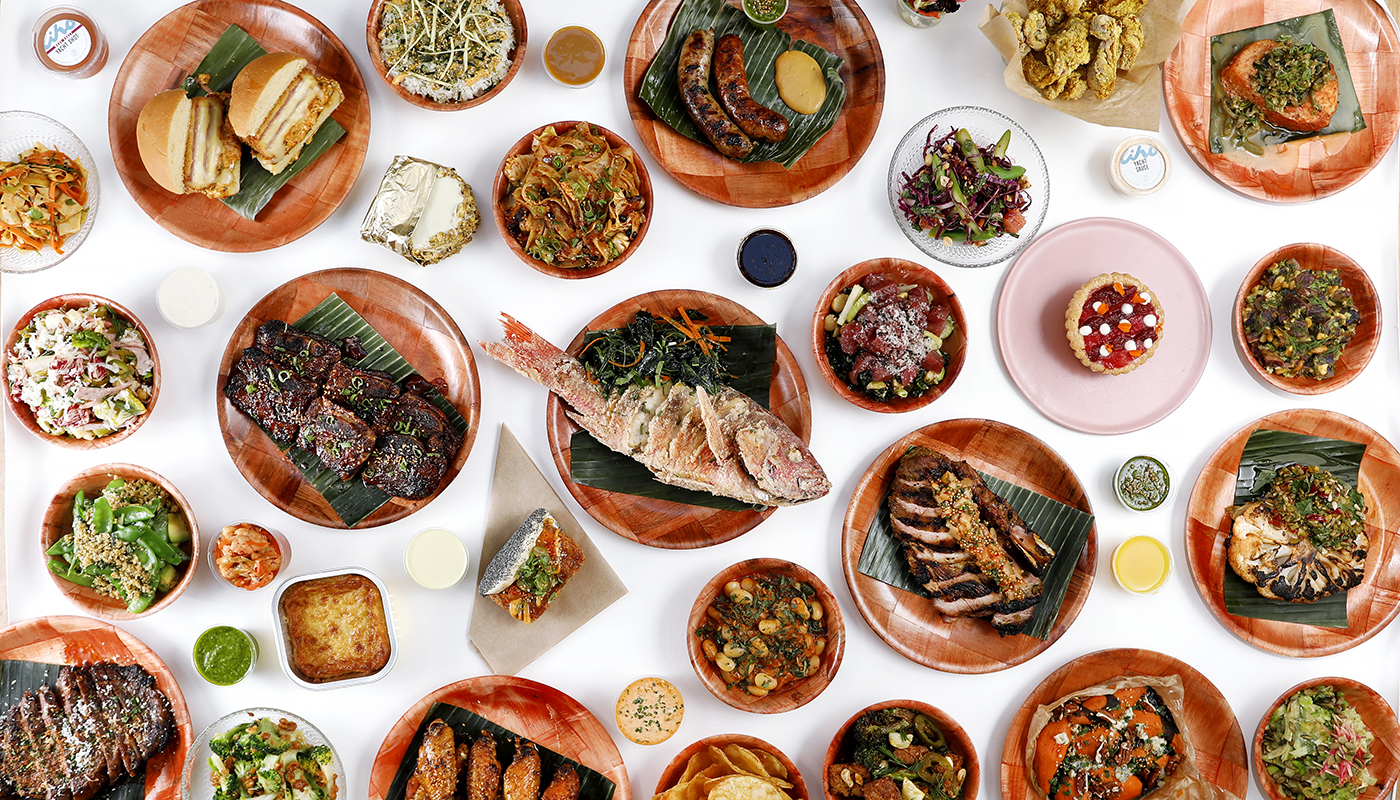
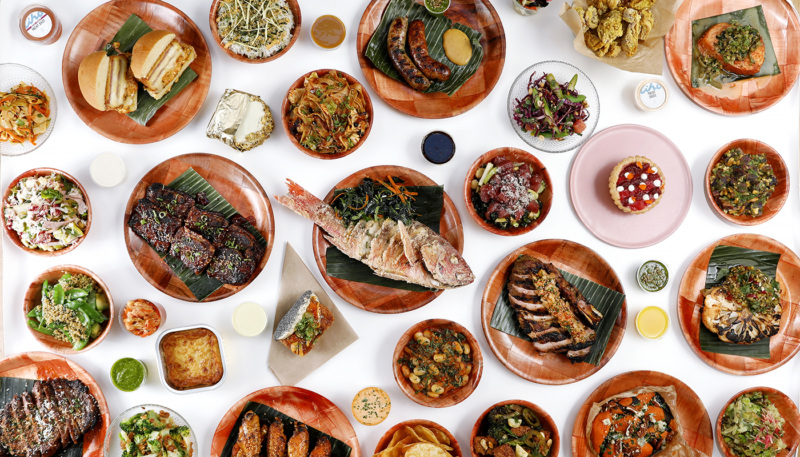
Just before the pandemic, I interviewed a chef and restaurant owner, Irene Li, of Mei Mei in Boston, who literally opened up her books and talked about all of her costs publicly, in an effort to explain to diners why things cost what they cost. It was impactful, but I think it’s still challenging for diners to understand.
Kapur: That’s great. But on the other hand, how sad is it that we have to be defending ourselves in that way? To not have the understanding that we’re not just these robber barons, right? We’re paying rent on this space 24 hours a day, seven days a week. Right now I’m looking at somebody cleaning the lampshades, and polishing the shelves, and there are three prep cooks, getting the day ready. And there are another two dishwashers. It’s not just the plate and the food on it that you’re paying for.
The irony of it all is, it makes front-page news if rental cars are $1,000 a day in Hawaii, but there’s nobody blaming the rental car company; they’re kind of blaming it on the market, right? It’s the chip shortage, or it’s the pandemic. But when it comes to restaurants, there’s this kind of open range of criticism from the public of this being expensive, or them thinking they could have gotten this for a lower price somewhere else. And in some ways, it’s recorded on this ledger as truth. What we don’t want to do is sit back and complain about it. But we know why things cost what they do here.
Hanak: This is a tricky business that is very archaic. And our industry probably has changed less than any other industry. Because we can’t automate a lot of our services, we have to be here; we can’t have people work off site. They can’t take orders on Zoom; they have to be present.
▪️
We’re trying to provide hospitality, but there’s
a cost to providing hospitality. We can’t be
a reasonably priced restaurant for everyone.
So, we need to find other ways to provide
for our community. But there is a cost for dining out
and if you choose to dine out, unfortunately you need to pay for it.
▪️
What are you most looking forward to in 2022, both for your restaurants and the industry at large?
Hanak: For our restaurants, it’s to keep building upon a foundation that we built. There’s just so much opportunity for the team that we built, to really make something that that they should feel very proud of, and to kind of add to what San Francisco is all about.
Kapur: I look forward to seeing restaurants being more thoughtful in how they operate. And I think you can see, people that are doing it have they found their why. I think it’s just more quality, less quantity. I think just an appreciation for going out: I think for me, personally, I just kind of took, took it for granted. Going out was just something we did regularly all the time. And now, I’ve been able to reframe that for it to be more special and intentional, and I’m just appreciating it more.
Deanna Ting is a Resy staff writer. Follow her on Instagram and Twitter. Follow Resy, too.



